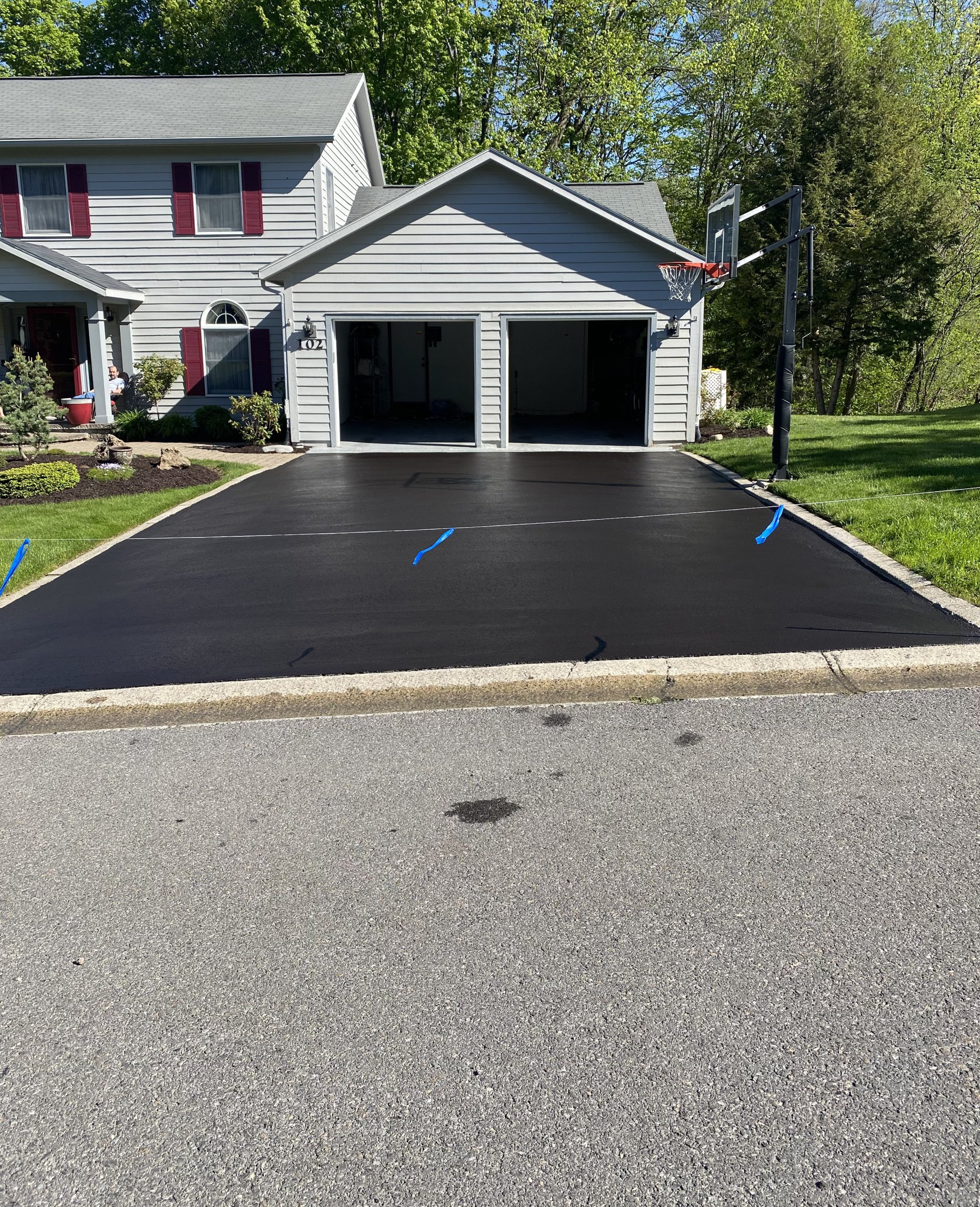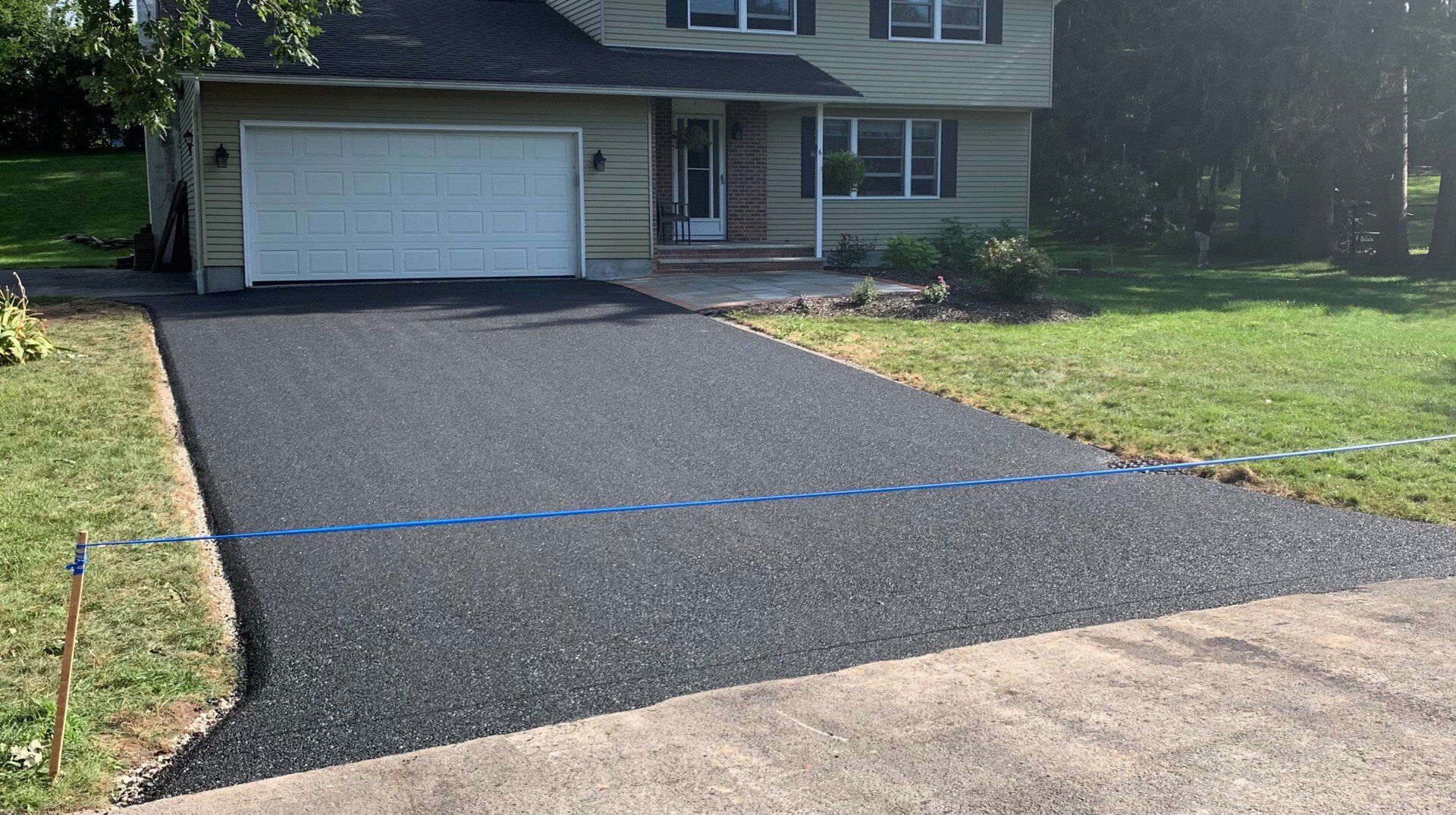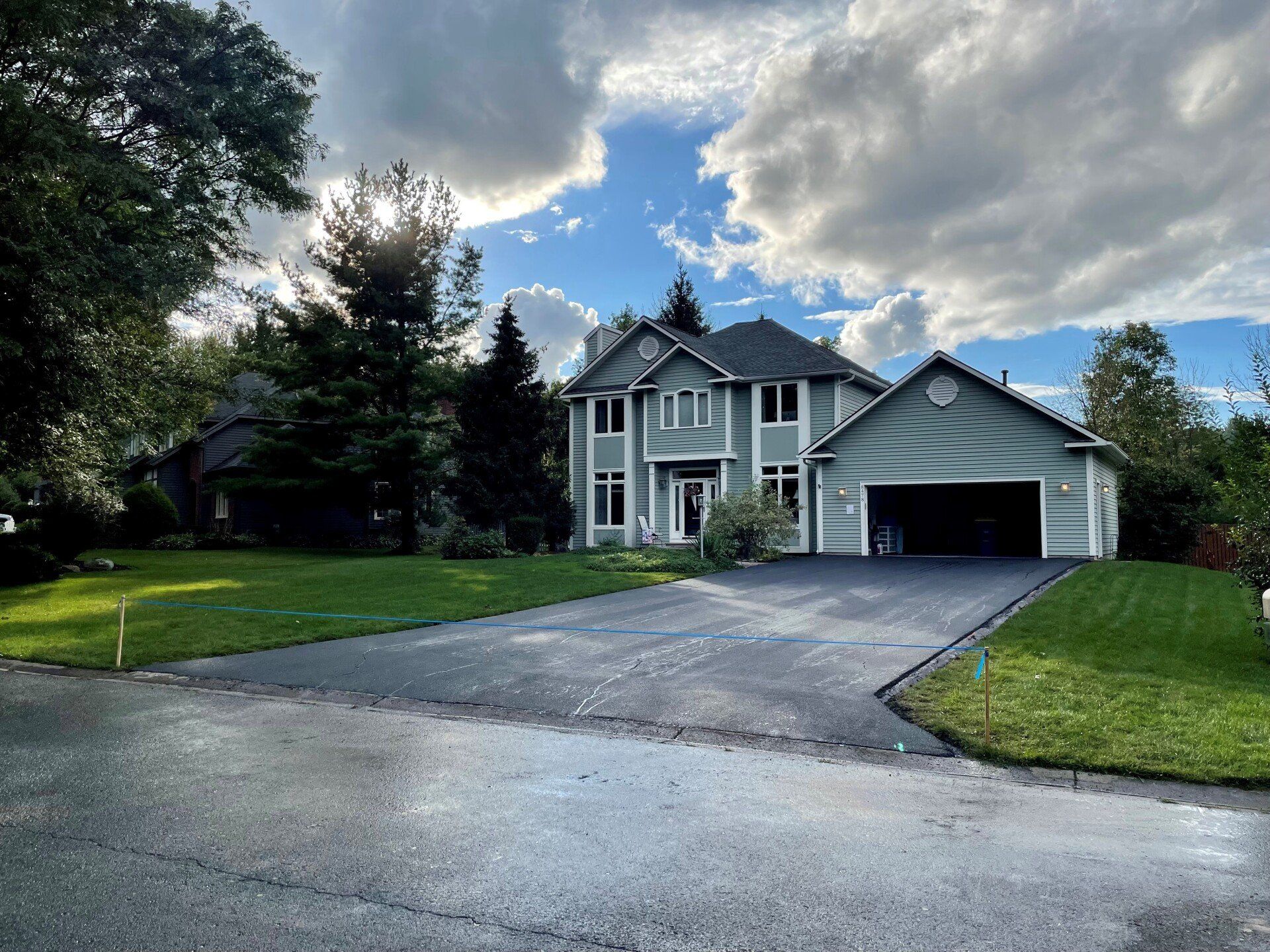Blog
Blog

29 Mar, 2022
Sealcoating Asphalt sealcoating is a process that is designed to keep asphalt surfaces water-tight and protected from the elements. Think of sealcoating as a protective “paint” that goes over the surface of a driveway or parking lot, giving it a jet black hue while also keeping the asphalt in tip top shape. Asphalt is just a bunch of rocks that are glued together with a petroleum-based binder under a high heat. When installed and compacted, asphalt surfaces give the appearance of being smooth, impenetrable surface. However, micro-pores exist between each individual rock that makes up the asphalt mix, allowing moisture to find it’s way through the asphalt layers. In a sense, you could say that asphalt is porous. Water, being one of the most destructive forces on planet earth, is not something that we want to consistently penetrate asphalt. With moisture in the asphalt layers and in the sub-base underneath, the asphalt is susceptible to damage, especially during the winter months when the ground freezes and thaws. Water expands and contracts as it heats up and cools down and the last thing we want to have happen is for the moisture sitting in the micro-pores of the asphalt to undergo this expansion and contraction. The fix? We need to allow as little moisture as possible to penetrate the asphalt layers in the first place. This is where sealcoating comes into play. When asphalt gets sealcoated, the sealer fills up the micro-pores in the asphalt and allows water that hits the surface to “shed” versus get absorbed. Again, the goal is to have as much water shed off the surface of the driveway or parking lot as possible to reduce the amount of moisture in the asphalt layers.

29 Mar, 2022
Remove and Replace A remove and replace (R&R) is a complete rebuild of the existing driveway or asphalt area. To understand what constitutes an R&R, we must first learn the different layers (materials) that make up an asphalt surface in the first place: Sub-grade: the sub-grade, for lack of a better term, is earth. It is the native soil that is found under the ground in the location of the asphalt project (think clay, sand, loam, silt). Sub-base: the sub-base is the layer of compacted material that is installed on top of the sub-grade. It creates the foundation for the eventual installation of asphalt (think runner-crush stone). Asphalt Concrete Layers: also known as blacktop, pavement, macadam, and asphalt, the asphalt concrete is the drivable surface of a driveway, parking lot, and roadway. It’s the black surface that comes to mind when you think of a driveway and it is installed in two layers: a binder course and top course. When undergoing an R&R the driveway is completely ripped out to the sub-grade, meaning that the blacktop layers and the sub-base (existing runner-crush stone base) are being removed until just the sub-grade is exposed. The sub-grade is then covered with geo-textile fabric and the sub-base is rebuilt with new runner-crush stone. When the new runner-crush stone has been compacted, the asphalt layers will be re-paved, starting with the binder course and finishing with the top course.

29 Mar, 2022
What Is A Resurface? A resurface is installing a new layer of hot-mix asphalt over an existing layer of established pavement. We are giving the driving area a new surface without doing any excavation or sub-base work. A resurface is very similar to installing the top coat on an R&R, which you can find more literature on here. Can Any Pavement Be Resurfaced? Technically, yes. You could throw asphalt over grass if you wanted to, but it doesn’t mean it’s going to last! Resurfaces are an asphalt procedure which have to meet a certain set of criteria to be effective and have a shot at longevity. First things first, the existing asphalt cannot have any sub-base failure. Sub-base failure shows itself in many forms, but most commonly in the form of tire rutting, alligator cracking, and severe settling. Unless you, as the property owner, are looking to waste money and resources, you would never want to resurface over asphalt that is failing due to problems with the sub-base underneath it. Remember, asphalt is only as good as the foundation that’s underneath it. If you have failure below, you’re going to get failure on top – it’s just a matter of time. Secondly, there shouldn’t be any extensive cracking on your driveway. Are we talking about surface cracking here? No. Surface cracking is going to happen on all asphalt at some point and it is fine to resurface over it. We’re talking about cracking that runs down to the sub-base, or in other words, cracking that goes through the depth of the asphalt layers. Asphalt “reflects” what is underneath it. For instance, if there is a dip in an existing asphalt surface and a new layer of fresh asphalt is installed over the dip, the dip will reflect to the new surface. In the case of deep cracking that goes to the sub-base, there are essentially two different planes of asphalt created. As these two different planes of asphalt are driven over, or as they go through freeze/thaw cycles, they will move and shift as two separate pieces. If there is a new layer of asphalt installed over this type of cracking, the shifting of the two separate pieces of asphalt will cause the layer on top to reflect that crack. In sum, we just want to make sure that whatever we’re going to resurface over has a shot at lasting. Resurfaces are not meant as an end-all-be-all procedure for your driveway, but when applied over the right conditions they can provide a homeowner with many more years of use without having to rip up the entire driveway. At the end of the day it all comes down to how well the sub-base was constructed, as that is the determining factor for the overall longevity of the driveway. Even the best resurface over a bad sub-base will not last as long as a mediocre resurface over a good sub-base. Best Application For A Resurface Resurfaces are best applied to driveways that have good surface conditions but have sank at fixed-elevations. Fixed-elevations are elevations that homeowners expect the driveway to be flush with. Most commonly garage floors, sidewalks, roadways, curbing, and concrete culverts are elevations that driveway surfaces should be flush with. Every driveway, at some point, was flush with the fixed-elevations around it. But often times, and almost inevitably, the driveway slowly sinks down and creates a reveal at these fixed-elevations. It’s very common to see 1-2 inch lips where driveway’s meet garage floors, sidewalks, and curbing – and sometimes the reveal can be more than that! However, the rest of the driveway can be in great shape and it doesn’t need to be removed and replaced. This is an ideal application for a resurface. By adding another layer of asphalt over the existing surface (usually 2-inches thick), the driveway can once again be flush with he fixed elevations that it touches.
SITE LINKS
Content, including images, displayed on this website is protected by copyright laws. Downloading, republication, retransmission or reproduction of content on this website is strictly prohibited. Terms of Use
| Privacy Policy



